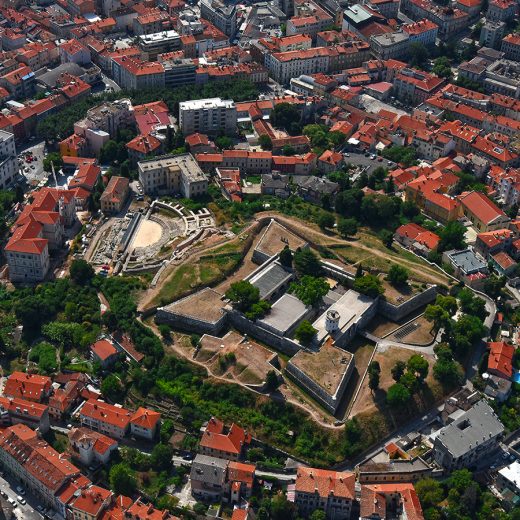It stands between two, most probably medieval towers, of simple construction built of uncarved stone blocks. At the top of the damaged arch, although hardly recognizable, is a carving of the head of Hercules and his club. Close to the club is a damaged inscription, most interesting in the historical context since it contains the names of two Roman officials, Lucius Calpurnius Piso and Gaius Cassius Longinus to whom the Roman Senate had entrusted the duty to found a Roman colony at the site of today’s Pula. Thus, between 47 and 44 BC Pula was founded as a settlement with urban features. Since the upper circular street passed though this gate, the axis of communication was obliquely placed with respect to the direction of the city walls.
Gate of Hercules




 Arena
Arena 









